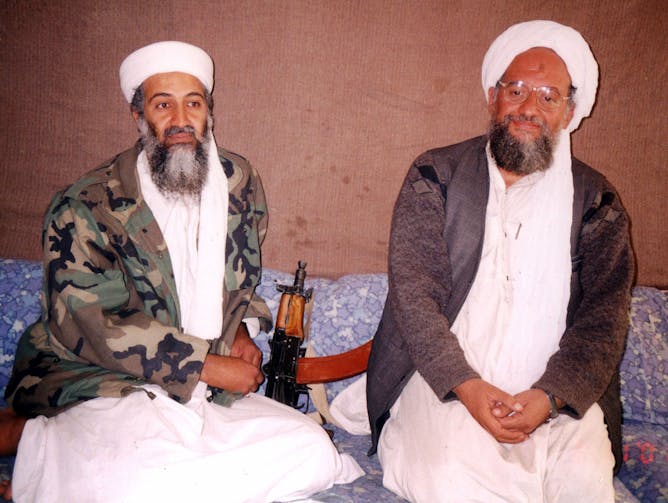|
It’s not the first time we have seen this play out: Members of the press are put on short notice of an important White House update, a president walks to a podium and delivers news to the nation of the death of a terrorist leader, killed in a successful U.S. operation.
This time it was Ayman al-Zawahri, a 9/11 plotter who became head of al-Qaida after Osama bin Laden’s demise, also the result of a U.S. raid. But there are important differences in the circumstances. The terrorist network is not the force it was, yet its affiliates still pose a threat both in the Middle East and North Africa. Moreover, the drone strike that killed al-Zawahri took place in an Afghanistan governed by an al-Qaida ally, the Taliban.
Terrorism experts Daniel Milton, Haroro J. Ingram and Andrew Mines explain how the assassination of al-Zawahri comes at a crossroads – not only for terrorist movement itself, but also as the U.S. pivots its counterterrorism strategy following the fall of Afghanistan.
Also today:
|

|
Matt Williams
Senior Breaking News and International Editor
|
|

Who will replace the man who replaced bin Laden?
Visual News/Getty Images
Haroro J. Ingram, George Washington University; Andrew Mines, George Washington University; Daniel Milton, United States Military Academy West Point
The US strike against al-Zawahri leaves the future of al-Qaida at a crossroads as the terrorist movement looks for a new leader.
|
Politics + Society
|
-
Aram Goudsouzian, University of Memphis
Bill Russell leaves behind an extraordinary legacy of winning championships and civil rights activism during a time of racial segregation.
-
Tim Lindberg, University of Minnesota
The U.S. House of Representatives recently voted for a bill that would federally protect same-sex marriage – and 47 Republicans signed on, too. Same-sex marriage isn’t the partisan issue it once was.
-
Sophie Bjork-James, Vanderbilt University
Since 2017, the FBI has warned US Congress that the rise of white nationalism and the violence of extremist militia groups is a dangerous domestic terrorism threat.
-
Angela Bradbery, University of Florida
The Inflation Reduction Act of 2022 bill in Congress may reduce inflation. Or it may not. What it will do is add to the long history of legislation names aimed at drumming up support for a bill.
|
|
Arts + Culture
|
-
Matthew Delmont, Dartmouth College
At the time, Gallup polls showed that fewer than 20% of Americans approved of interracial marriage.
|
|
Environment + Energy
|
-
Janey Camp, Vanderbilt University
As recent deluges in St. Louis and Kentucky show, flash flooding can happen in urban and rural areas, with deadly results in either setting.
|
|
Health + Medicine
|
-
Leah Samuel, The Conversation
After the announcement of President Biden’s heat initiative, The Conversation revisits stories on high summer temperatures and human health.
|
|
Education
|
-
Elizabeth Zumpe, UMass Lowell
Three years observing in a public school has given one scholar a close-up look at the sweeping challenges in public education.
|
|
Economy + Business
|
-
Sam Polzin, Purdue University; Ahmad Zia Wahdat, Purdue University; Jayson Lusk, Purdue University
About a third of American adults in Generation Z lack the money or resources needed for reliable access to nutritious food.
|
|
Science + Technology
|
-
Vivek Astvansh, Indiana University
Whether safety-related fixes demand a software upgrade or a trip to the dealership, carmakers must notify the National Highway Traffic Safety Administration and all affected drivers
|
|
From our international editions
|
|
|
|
|
|
| |
| |
| |
| |
|
|